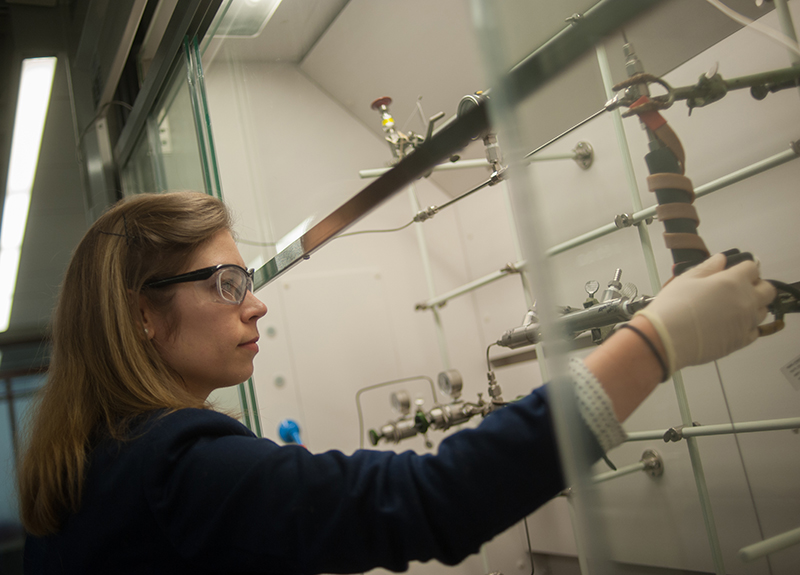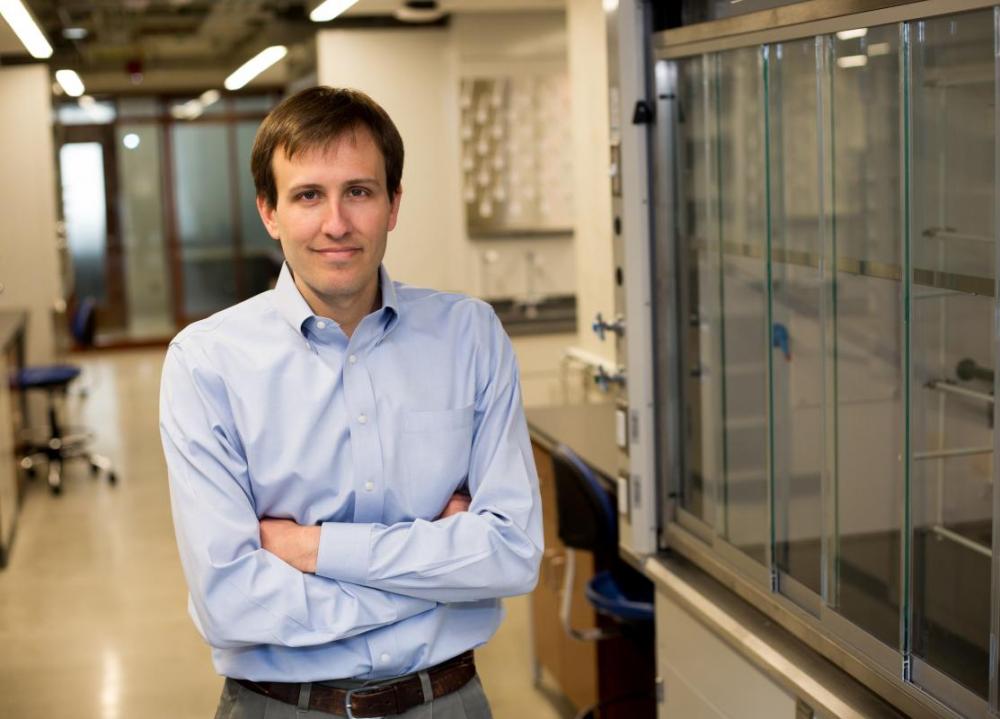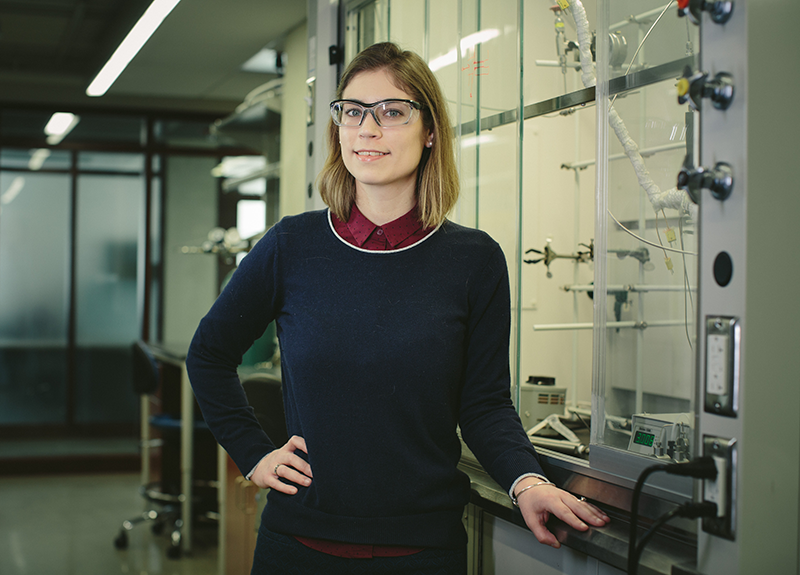The production of industrial chemicals uses vast amounts of energy. Chemical manufacturers use approximately 2.1 billion kilowatt-hours of electricity annually to produce about 30 million tons of formaldehyde worldwide. That’s enough energy to power 200,000 homes in the United States for a year according to US Energy Information Administration estimates. At Northwestern, Tracy Lohr, Research Assistant Professor of Chemistry, is experimenting with a new method of commercial formaldehyde production—one that is completely energy neutral.
Formaldehyde is used in everything from building materials and insulation to furniture and fertilizers.
The predominant method for manufacturing the chemical—known as the FORMOX™ process—involves heating a mixture of air, steam, and methanol to 350 to 450 °C (662 to 842 °F) and channeling it through a reactor containing iron-molybdenum/-vanadium oxide or silver metal as a catalyst. This process produces formaldehyde and water as its main byproducts, in addition to smaller amounts of waste products.
Lohr’s process, which is able to operate at 40 to 90 °C (104 to 194 °F), may offer several unique competitive advantages.
“In addition to operating at much lower temperatures, our method and catalyst produces formaldehyde and hydrogen gas as byproducts,” Lohr said. “That hydrogen can then be collected and recirculated into a fuel cell in order to power the chemical reaction itself. Our process generates no greenhouse gases, which isn’t the case for current methods.”
Not only is the reaction able to produce enough hydrogen to power itself, but it may actually be able to generate excess electricity. After subtracting energy used to power the reaction, Lohr estimates that her method could produce an additional 381 to 421 kilowatt-hours of electricity per ton of formaldehyde using a hydrogen fuel cell operating at 50 percent efficiency. That’s enough clean energy to power an average home in Illinois for over two weeks.
Lohr’s process may offer additional environmental benefits as well. To facilitate the reaction, she is using a catalyst based on chemically bonded molybdenum and carbon, both of which are inexpensive and environmentally friendly elements. Additionally, Lohr’s catalyst does not decompose in water. This is an advantage when it comes to sourcing methanol from renewable resources like biomass.
“Bio-available alcohols like methanol that are derived from biomass are usually heavily contaminated with water. In fact, sometimes the liquid can contain up to 90 percent water. The fact that our catalyst can function properly under these conditions is important because it means we can successfully harness that source of methanol for this reaction,” she said.
Lohr built her reactor in the Flex Lab at the Institute for Sustainability and Energy at Northwestern (ISEN) alongside Neil Schweitzer in the university’s Department of Chemical and Biological Engineering. She is leveraging ISEN funding, lab space, and equipment to test and alter the conditions of her of experiment. By adjusting factors such as the flow rate of methanol, reactor temperature, and catalyst configuration, she is striving to optimize the highest yield of hydrogen along with the highest conversion of methanol to formaldehyde.
Selectivity—that is, the ability of a catalyst to direct the reaction to yield a particular product—is also an important factor. In current commercial processes, the selectivity for formaldehyde is around 90 percent. Lohr is hoping her experiments display comparable selectivity to remain competitive.
“We’re still in an early stage,” said Lohr. “But the experiments we’re conducting in the Flex Lab should yield definitive conclusions within a year. Once we generate our data at ISEN, my hope is to be able to show the chemical industry that this process works and that we’re ready to scale it up to a large scale pilot stage.”






